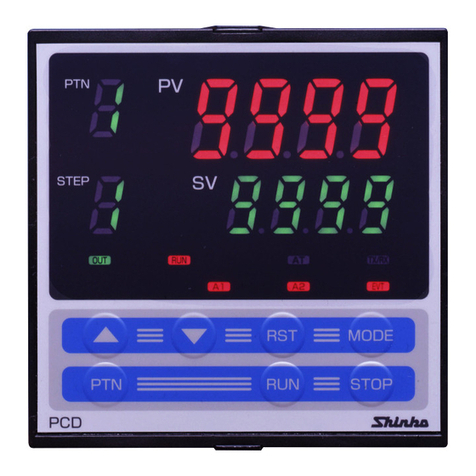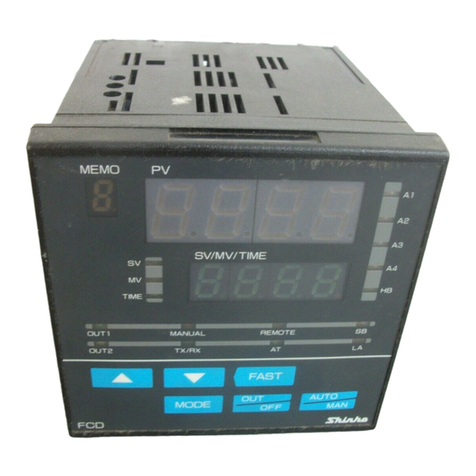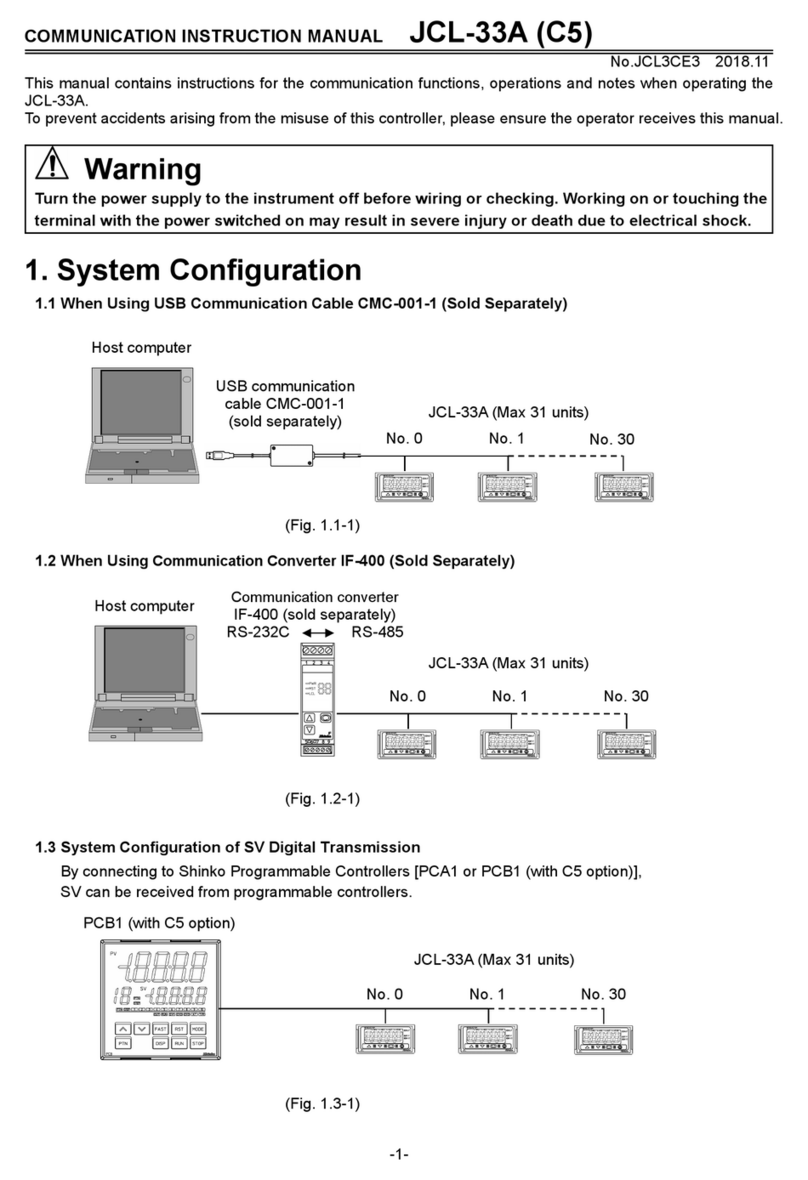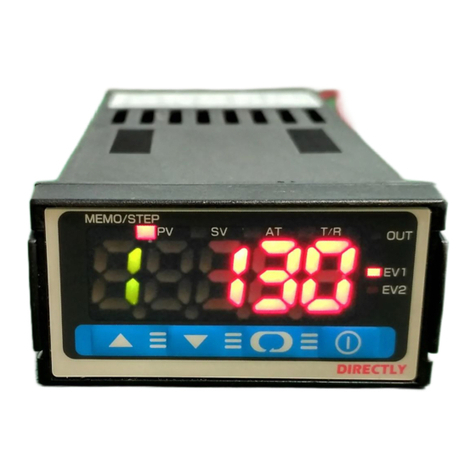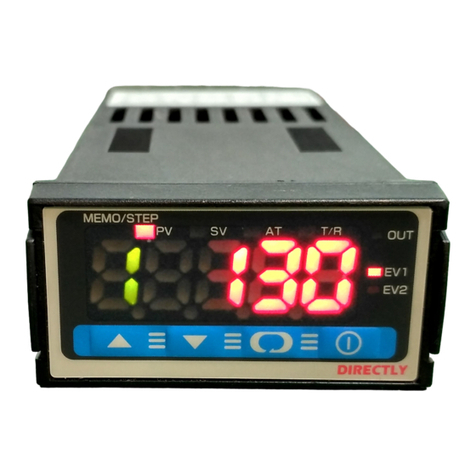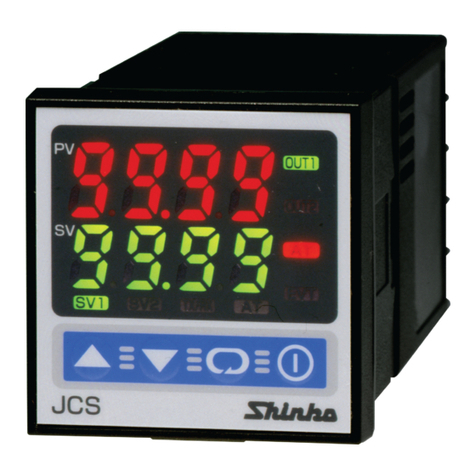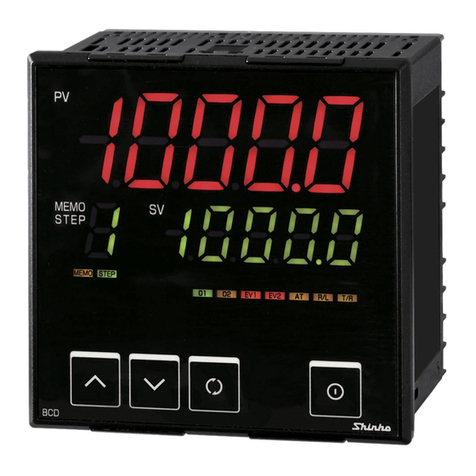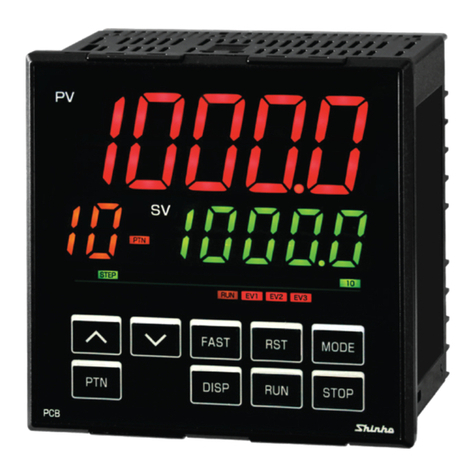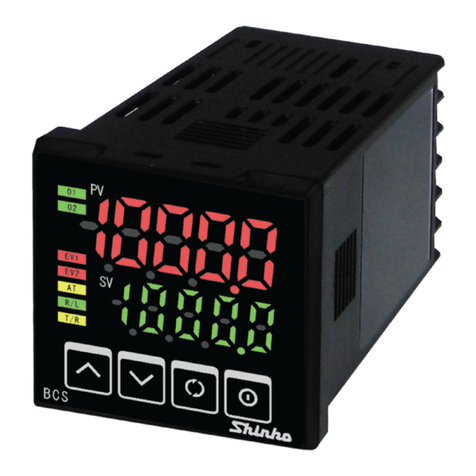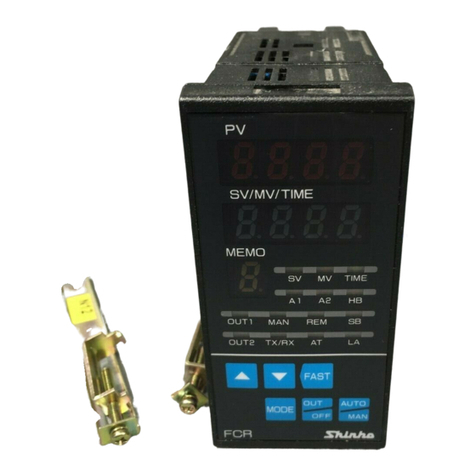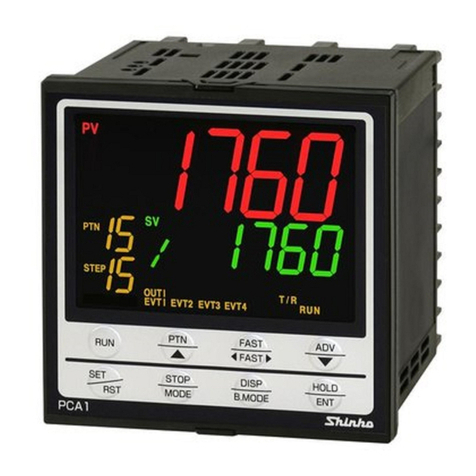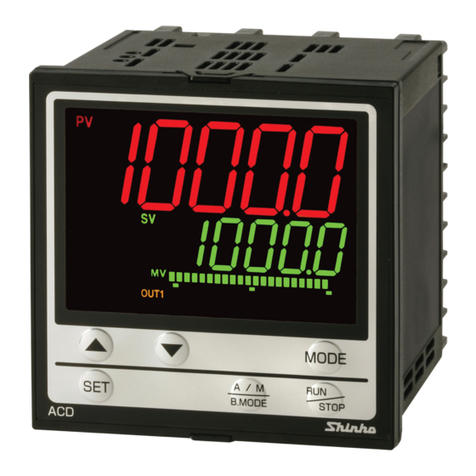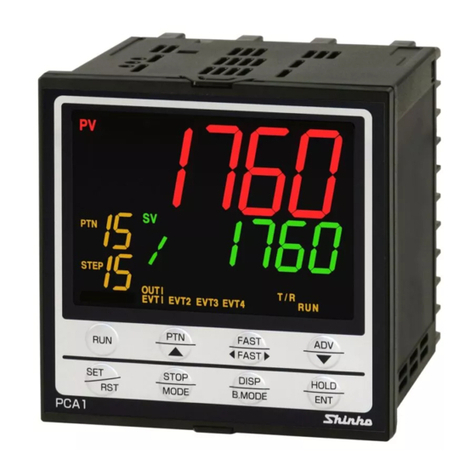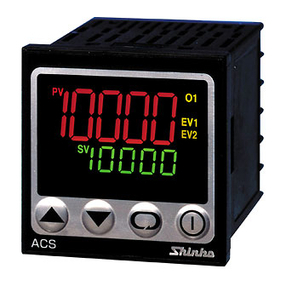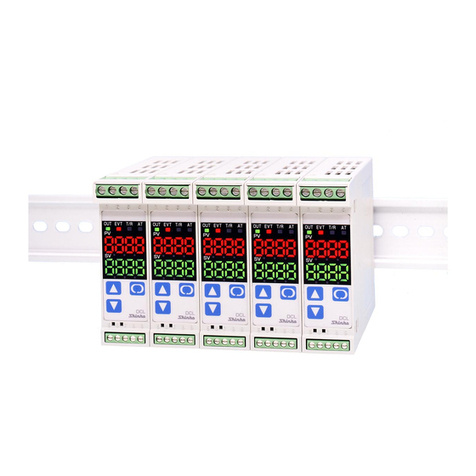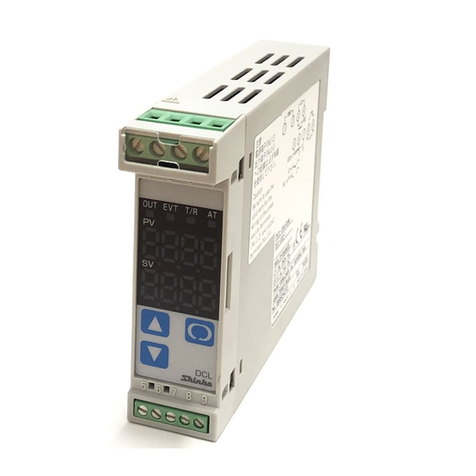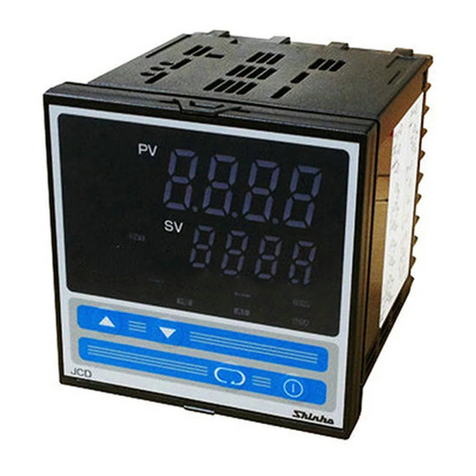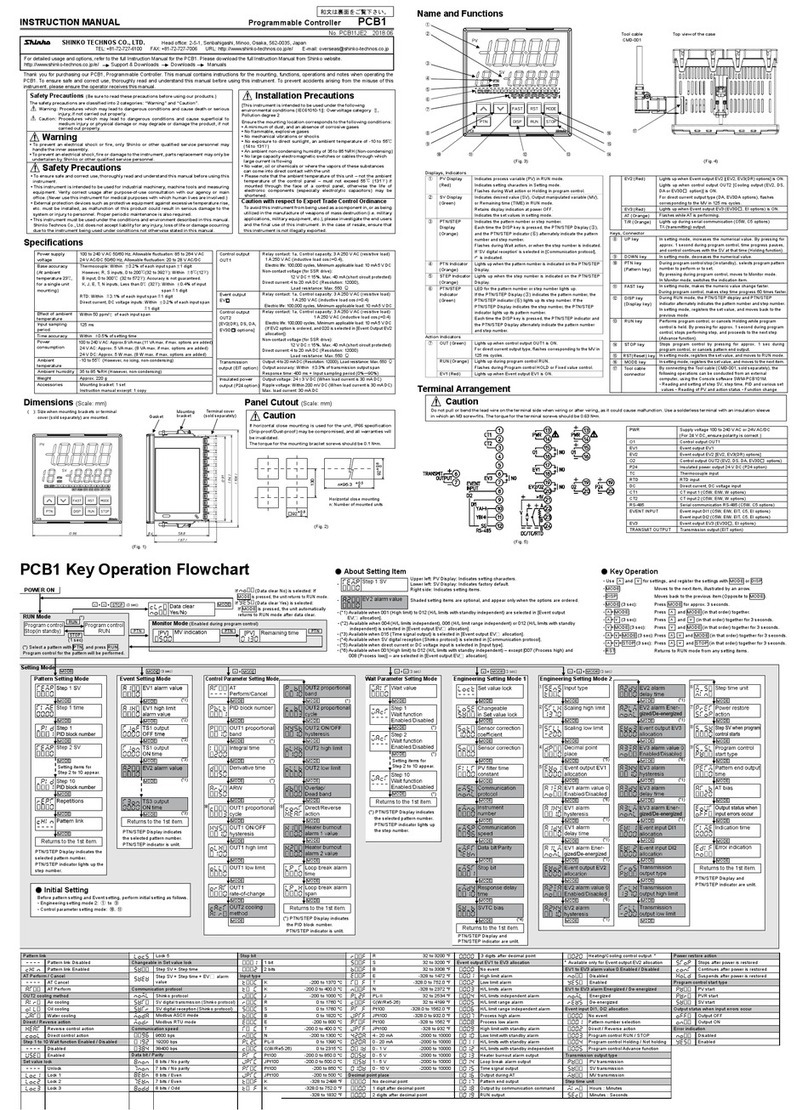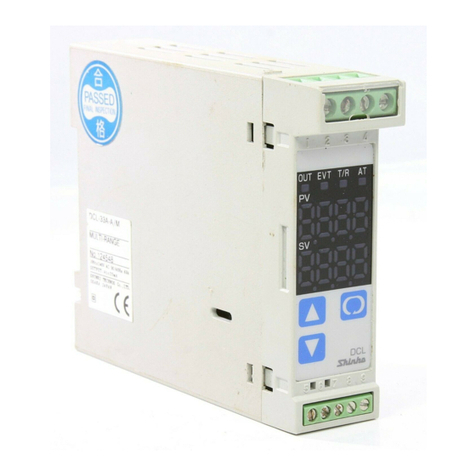5
Contents
1. Model Page
1.1 Model ---------------------------------------------------------------------------------- 6
1.2 How to Read the Model Label --------------------------------------------------- 6
2. Name and Functions of Sections ----------------------------------------------- 7
3. Mounting to the Control Panel
3.1 Site Selection ---------------------------------------------------------------------- 8
3.2 External Dimensions (Scale: mm) --------------------------------------------- 8
3.3 Current Transformer (CT) Dimensions (Scale: mm) ---------------------- 8
3.4 Mounting to a DIN rail ------------------------------------------------------------- 9
4. Removal from a DIN rail ----------------------------------------------------------- 11
5. Wiring
5.1 Lead Wire Solderless Terminal -------------------------------------------------12
5.2 2ch Controller Spec --------------------------------------------------------------- 13
5.3 Timer Spec -------------------------------------------------------------------------- 13
5.4 Potentiometer Input Spec ------------------------------------------------------- 14
5.5 Wiring Example -------------------------------------------------------------------- 15
5.6 Wiring Example of Heater BurnoutAlarm (W, W3 option) -------------- 16
5.7 Wiring Example ofAlarm Output (AO option) ------------------------------ 17
5.8 Wiring Example of Heater Burnout Alarm (single-phase) +
Alarm Output (AW option) ------------------------------------------------------- 18
5.9 Wiring Example of Serial Communication (C5 option) ------------------- 19
6. Outline of Key Operation and Setting Groups
6.1 Outline of Key Operation -------------------------------------------------------- 20
6.2 Setting Groups --------------------------------------------------------------------- 20
6.3 Basic Operation Procedures --------------------------------------------------- 21
7. Key Operation Flowchart --------------------------------------------------------- 22
8. Setup
8.1 Turn the Power Supply to the WCL-13A ON ------------------------------- 24
8.2 CH1 Function Group ------------------------------------------------------------- 25
8.3 CH2 Function Group ------------------------------------------------------------- 30
8.4 Special Function Group --------------------------------------------------------- 34
9. Settings
9.1 SV Group ---------------------------------------------------------------------------- 39
9.2 CH1 Parameter Group ----------------------------------------------------------- 40
9.3 CH2 Parameter Group ----------------------------------------------------------- 43
10. Operation
10.1 Starting Operation --------------------------------------------------------------- 46
10.2 Switching PV/SV ----------------------------------------------------------------- 46
10.3 Indicating MV --------------------------------------------------------------------- 46
10.4 AT Perform/Cancel -------------------------------------------------------------- 46
10.5 Performing Cascade Control ------------------------------------------------- 47
11. Action explanation
11.1 CH1, CH2 OutputAction ------------------------------------------------------- 48
11.2 CH1, CH2 Output ON/OFF ControlAction -------------------------------- 48
11.3 CH1, CH2 Alarm Action -------------------------------------------------------- 49
11.4 Heating/Cooling Control Action ---------------------------------------------- 50
11.5 Heating/Cooling Control Action (When Setting Dead Band) ---------- 51
11.6 Heating/Cooling Control Action (When Setting Overlap Band) ----- 52
12. AT/Auto-reset of This Controller
12.1 AT (Auto-tuning) ----------------------------------------------------------------- 53
12.2 Auto-reset (Offset Correction) ----------------------------------------------- 53
13. Specifications
13.1 Standard Specifications ------------------------------------------------------- 54
13.2 Optional Specifications -------------------------------------------------------- 62
14. Troubleshooting
14.1 Indication -------------------------------------------------------------------------- 65
14.2 Key Operation -------------------------------------------------------------------- 66
14.3 Control ----------------------------------------------------------------------------- 66
15 Character Tables ------------------------------------------------------------------- 67
